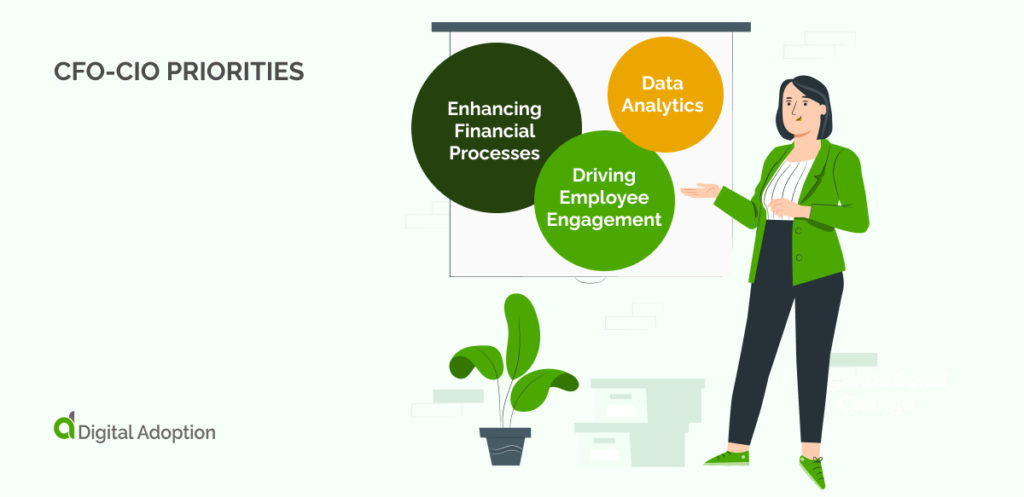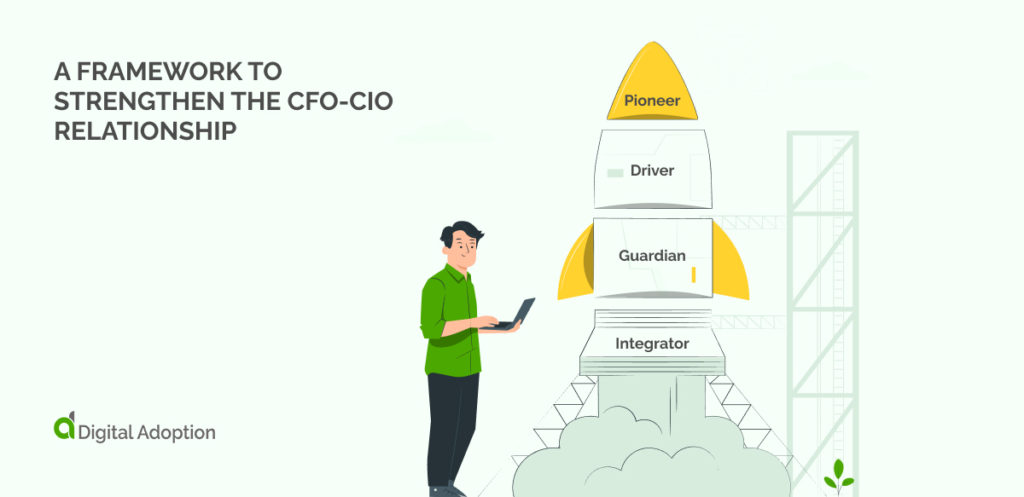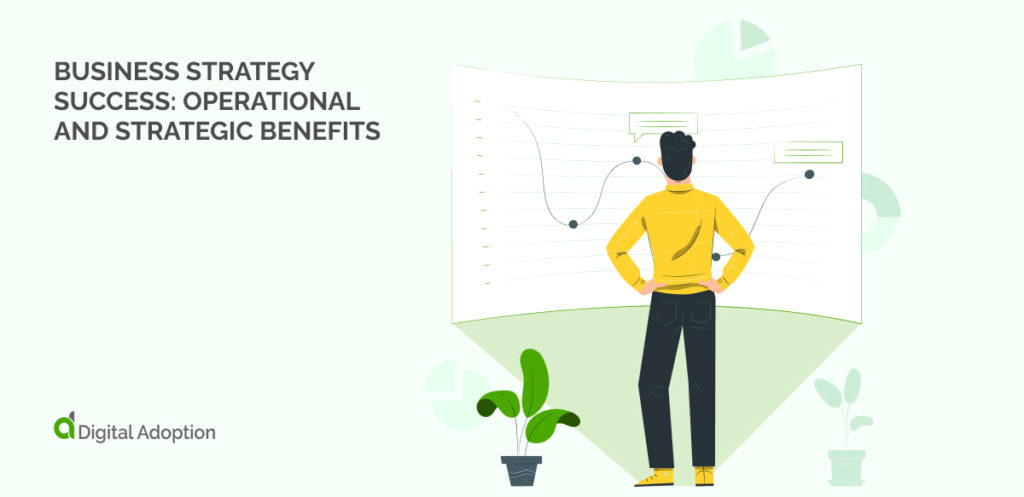Collaboration drives growth and efficiency to increase output and promote innovation. One of the best examples of close working between two roles is the relationship between the CFO (Chief Finance Officer) and the CIO (Chief Information Officer).
But how can you build the most robust CFO-CIO partnership? What should this relationship prioritize? And what digital initiatives and outcomes should result from this relationship? These questions will be explored, starting with enterprise-wide digital investments as the basis for the CEO-CIO relationship.
How To Maximize Enterprise-Wide Technology Investments
Today’s economy fluctuates wildly, and the current age of business involves constant technological disruption, which will increase in the coming years. However, due to many factors, such as the cost of living increases, funding becomes more challenging despite the growing need for technology in business.
The need to make technology investments knowing they are the right decisions at the best time, results in more ROI than ever. Chief Financial Officers are responsible for financial management and organization vision. Chief Information Officers coordinate all data systems across departments to ensure the IT team utilizes data to achieve the organization’s vision. CFOs and CIOs create the best investments during collaboration.
Collaboration between these roles makes sense as the CIO can advise the CFO on the information to make the best investment decisions for technology and other areas. But this is often not the case. For collaboration to occur, the two roles need to speak the same language.
Funding for digital initiatives increases with a CFO-CIO solid relationship in place. But the relationship is absent or weak in many organizations. Gartner research shows that only 30% of CFO-CIO partnerships represent solid digital relationships. Effective communication can be challenging for this relationship due to the difference in priorities between the two roles.
CFO-CIO Priorities

CFO-CIO relationships must prioritize certain areas to ensure the relationship can help achieve a successful digital transformation. The first of these priorities is data analytics.
1. Data Analytics
CFOs in larger companies can make decisions about digital initiatives to the value of billions of dollars in a single week. Financial analytics can reduce the risks of significant investments by showing that certain tech investments are likely to give ROI quickly or via long-term value creation for shareholders.
CIOs articulate this analytical data to the CFOs to ensure they have all the information needed to make the best decision for the long-term resilience of their organization. CIOs present this data to CFOs using digital capabilities such as visualization tools and reporting. CFOs can keep up to date with market trends and business processes.
CFOs and CIOs tend to see their roles as separate, as Gartner identifies. “80% of CFOs believe they understand how financial management needs to adapt to support enterprise digitalization, but only 55% of CIOs agree”. However, CFO-CIO solid partnerships lead to effective communications about data integrity and processes, producing accurate data and digital investment success.
2. Enhancing Financial Processes
Often, there is a disconnect between the more traditional cultures of finance teams and IT departments’ innovative, tech-focused aims. However, these differences must be addressed by the two c-suite roles together to achieve the optimal CFO-CIO partnership.
The first step in this process is that the CFO and CIO look at the processes and procedures of the finance department to establish what they are and how they work. The second step is to innovate the tools used by the finance department using technology adoption.
CIO skills learned in IT, such as utilizing an automation strategy and artificial intelligence, are communicated to the CFO. The CFO then uses their knowledge of finance processes to integrate these new technologies to improve efficiency, measured with operational metrics.
3. Driving Employee Engagement
The Covid-19 pandemic highlighted the need for staff engagement. There are many benefits to the cohesion afforded to teams when all staff works within one office. Organizations can take this for granted, but the pandemic changed everything as there were periods of nearly all employees working from home. New employee onboarding was taking place over video-conference apps such as Zoom, and new employees did not meet their colleagues in person until the pandemic impact was reduced.
The changing structure of the team made organizations reflect on how individuals form the backbone of an organization. Out of this, companies began to perceive employee experience and engagement differently. From this point forward, senior staff began to pay more attention to ensuring staff felt valued throughout their entire employee lifecycle.
The CFO-CIO partnership can drive a company-wide emphasis on accessible, comprehensive onboarding for new employees, training, and extra rewards for overtime and offboarding. These efforts can use the partnership to promote and maintain a culture of cohesion and inter-departmental collaboration between staff of finance, IT, and other teams in the organization as all staff feel valued.
This partnership can spearhead a digital initiative for employee engagement to drive workflow enablement by building a digital workflow system accessible across the company.
The Key To A Successful CIO-CFO Relationship

The biggest obstacle to a robust CFO-CIO relationship is understanding each other’s priorities. CIOs work primarily with innovative processes, while CFOs use more established techniques. All business markets are in flux, characterized by technological disruption, so innovation and digital transformation are always in demand. This concept is not the approach with which CFOs are familiar.
The key to unlocking the strong CFO-CIO relationship becomes how to convince CFOs that continuous innovation is the only approach to building organizational resilience. So how is this achieved?
A Framework To Strengthen The CFO-CIO Relationship

Strengthening the CFO-CIO relationship begins with achieving a mutual understanding between both roles that a relationship is needed to enhance the organization’s processes.
- Achieving A Mutual Understanding
CFOs and CIOs can collaborate more quickly when they see similarities in the operations of their roles. CFOs can see that they have a similar mandate to CIOs at the micro and structural level, ensuring the efficiency of business processes while building and positively influencing organizational strategic growth plans.
The Four Faces framework is structured to help staff understand their communication styles and behaviors. CFOs can use the framework to identify CIO responsibilities and see the parallels to their own, reducing the gap between roles.
- Catalyst: How is the IT team identifying and investing in future business growth?
- Strategist: What part does technology play in the company’s vision for expansion?
- Operator: Is the IT team producing up-to-date, accurate data designed to support the delivery of easily predicted deliverables and insights about earnings, market share, profits, and costs?
- Steward: What does the IT team do to manage security and safeguard core assets? Is adequate governance in place for investments in technology?
CFOs can use the Four Faces framework to answer these questions, helping them to see that their role is not dissimilar to the role of the CIO. This framework provides a strong foundation for the CFO-CIO partnership to begin.
- Build Communication Using The Business Chemistry Model
Common issues that arise in the attempts to establish effective communications and relationships between CFOs and CIOs are that there are often personality clashes or a lack of understanding of the languages used in IT and finance.
Identifying their behaviors and communication styles can help CFOs and CIOs agree on specific areas. The Business Chemistry framework facilitates this process using four Working Styles.
Pioneer
- Pioneers are creative, spontaneous, and imaginative.
- Pioneers are open-minded to new possibilities.
- Pioneers tend not to follow the rule book.
- Pioneers enjoy risks.
Driver
- Drivers are logical, quantitative thinkers.
- Drivers enjoy challenges and decision-making.
- Drivers don’t like rules and can appear apathetic.
Guardian
- Guardians like stability and structure.
- Guardians are methodical, meticulous, and practical.
- Guardians are reserved and loyal.
- Guardians are often poor communicators.
- Guardians are usually skilled with data.
Integrator
- Integrators value connections.
- Integrators enjoy team-building and strong relationships.
- Integrators are empathic and meditative.
- Integrators do not like making decisions.
When CFOs and CIOs view these categories, they may fall into more than one type. Whatever type each role associates with can help each other communicate by understanding their communication style.
CIOs are usually Pioneers or Integrators, and CFOs more often identify as Guardians and Drivers. In viewing each other’s varying values and ways of communicating, CFOs and CIOs can locate each other’s strengths and weaknesses, reaching a point of understanding and empathy. This process can lead to differences becoming strengths as the roles reach understanding and communication styles are adjusted to strengthen the relationship.
- Drive Value Through Collaboration
Without working on projects together, communication and understanding are of little value. CFOs and CIOs can collaborate on technology investment initiatives that facilitate shareholder value via revenue growth, asset efficiency, and operating margin.
This activity allows both c-suite roles to engage in a task from different perspectives for the same goal of using IT systems to create shareholder value.
Taking these three steps of achieving mutual understanding, building communication, and finally driving value through collaboration strengthens the CFO-CIO partnership. These steps offer a structured way to build a relationship that can promote cooperation and augment the approach to investment in digital initiatives for future growth.
Digital Initiatives Strengthen The CFO-CIO Partnership

According to Gartner, digital initiatives are imperative to ensuring that digital funding does not fall behind. And with 78% of CFOs planning to maintain or increase digital enterprise initiatives in the next two years, digital initiatives will always be a core function of the CFO-CIO relationship and the critical business processes they work to streamline.
To add to this argument for CFO-CIO relationships, Gartner’s research shows that 30% of these relationships are digital partnerships. This figure is surprising and highlights the lack of cohesion between CFOs and CIOs in many organizations.
Business Strategy Success: Operational And Strategic Benefits

A strong CFO-CIO relationship can form the heart of all layers of operations and strategy. This fact is mainly due to c-suite executives holding a large amount of knowledge, experience, and influence over their organization.
When CFOs and CIOs collaborate effectively, the power of the collaboration becomes much greater than the sum of the individual roles in a world where digital spending is increasingly essential. This relationship makes it 51% more likely to get digital investments funded easily.
Differences Can Become Strengths

The relationship between the CIO and CFO within an organization must be created and strengthened for any large enterprise to remain resilient. Frameworks and models such as the Four Faces framework and the Business Chemistry model can help this relationship become an efficient cross-functional team.
Human relationships are complex, and so it can be trial and error whether two c-suite colleagues will work effectively together or not. While working toward seeing commonalities of each other’s roles can be helpful, it can also be useful to praise each other’s differences in approach during this major challenge.
This attitude of celebrating differences and similarities can lead to a strong relationship as collaboration becomes promoted by championing different ways of attacking tasks. Risk appetite can also improve as the CFO and CIO share knowledge, experience, and responsibility.
Strong CFO-CIO partnerships lead to more digital spending as the relationship makes it more efficient to find funding. Companies that invest in new technologies remain resilient and improve intended business outcomes, boosting business performance.















